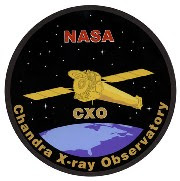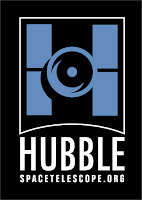ESA - Gaia Mission patch.
Nov. 26, 2020
On a Friday at the end of 2018, the top brass of a NASA deep space mission convened for a tense meeting. Hour by hour the New Horizons probe was hurtling toward a New Year’s Day rendezvous with Arrokoth, an ancient, icy rock at the edge of the Solar System. The team had one last chance to send instructions for pointing the probe’s cameras. Success would ensure in-frame pictures of Arrokoth, and the clues it held for how the planets formed. Failure would mean expensive pictures of an empty void.
The mission managers who gathered at New Horizons headquarters in suburban Maryland realized they had a “massive problem,” says Marc Buie, a team member and planetary scientist at the Southwest Research Institute in Boulder, Colorado. Something was off in images already beamed back. Either the flying spacecraft or the orbiting rock was a teensy bit lost in a universe where nothing is nailed down.

Image above: Quasars, generated by black holes in distant galaxies, are far more stable beacons than nearby stars. Image Credits: J. PAULSON/ALAMY STOCK PHOTO.
The team debated what to fix. Some thought the probe’s position, calculated from Earth-based measurements, was correct, in which case Arrokoth was in an unexpected place. But Buie believed the rock was right where it should be, which suggested thrusters had nudged the spacecraft itself a hair off course.
Buie was confident because he was tracking Arrokoth’s position relative to an ultraprecise map of far-off beacons called quasars: cosmic lighthouses generated by black holes in distant galactic centers. But the map was largely untested, having just been released by a European Space Agency star-mapping satellite called Gaia. It was the basis of a brand-new celestial reference frame, a fixed, imaginary grid against which everything else moves, akin to lines of latitude and longitude on Earth. And Buie was gambling the Arrokoth flyby on that new grid.
For the past few decades, astronomers have based their celestial grid on radio observations of several thousand quasars. These radio beacons not only guide the pointing of telescopes, but they are also the bedrock of the reference frame for the spinning, bucking Earth. Without them, GPS devices would lose their accuracy and many ultraprecise studies of processes such as plate tectonics and climate change would be impossible. But observations of these beacons are costly and rely on radio telescopes.
By 2018, when New Horizons was approaching Arrokoth, Gaia had produced its own version of a reference frame, based on half a million quasars seen in the visible wavelengths most astronomers use, not radio. Buie persuaded the New Horizons team to trust the new framework. A correction based on the Gaia positions went up to the probe.
The team got it right: When the closest flyby images came back, Arrokoth was framed perfectly. “None of that would have happened if we hadn’t had the Gaia catalog,” Buie says. “It’s a fundamental rewriting of how we do positional astronomy.”
The rewriting has continued. Next week, on 3 December, Gaia will release, along with the latest data about billions of Milky Way stars, its newest reference frame, built from 1.6 million quasars scattered across the sky. “It is improved, larger, better, more beautiful,” says François Mignard, an astronomer at the Côte d’Azur Observatory in France who leads Gaia’s reference frame team.
The Gaia reference frame is only the latest solution to a very, very old problem. From planets to comets to asteroids, much of the sky drifts from night to night. Studying these objects would be hopeless without comparing them with points that stay still.
At first, the stars looked like trustworthy reference points. In the second century C.E., the Alexandrian astronomer Ptolemy revisited constellations his predecessor Hipparcos had observed some 3 centuries earlier. With his naked eyes, Ptolemy couldn’t find any movement among the stars, which he assumed were fixed points on a sphere rotating around Earth.
But by the 1700s, careful observations with telescopes proved the stars’ apparent positions in the sky do shift over the years, as they move through the cosmos. In response, astronomers spent whole lifetimes building catalogs of stars far enough away or slow enough to mostly stay still.

Image above: Next week, Europe’s star-mapping Gaia mission will release a new celestial reference frame, built from the positions of 1.6 million quasars. Image Credits: ESA/ATG MEDIALAB; ESO/S. BRUNIER.
The game changed again when astronomers started to observe quasars in the 1970s, using radio dishes on different continents to make hyperprecise measurements of their positions. Like stars, quasars appear as points of light. But they are billions of light-years away, so they barely budge within human lifetimes. Finally, the distant sky, not Earth, was the ultimate arbiter of where things are.
Today, the radio measurements feed into a global bureaucracy that maintains reference frames, imposing order on space in the same way astronomical observatories used to keep time. Many of the quasar measurements are accurate to about a hundred-millionth of a degree—smaller than the apparent size of a basketball on the Moon. They not only hold the sky in place, but also reveal jerks in Earth’s rotation speed and wobbles in its axis that arise from earthquakes and hurricanes. The calculated tweaks are used in turn to correct GPS devices, which would otherwise lose track of Earth’s spinning surface.
The growing number of rock-solid quasars, now in the thousands, also transformed interplanetary navigation. For decades, NASA tracked its spacecraft mainly by measuring their velocities as they flew away, which made it possible to calculate their distances from Earth. Their positions in other dimensions were only coarsely estimated by the sensors on the spacecraft. But after a pair of high-profile Mars failures in 1999, the agency added another method: It looks for quasars that are near the craft’s current location in the sky—anchoring the probe to the reference frame. The approach has enabled subsequent bull’s-eye landings on Mars and elsewhere, says Barry Geldzahler, who recently retired as NASA’s navigation lead. “We make the hard things routine, and kind of boring.”
For the many space scientists who work outside of radio wavelengths, however, a radio-based reference frame isn’t so useful. Astronomers had spent decades trying to build up rival reference points in visible light. But quasars are faint specks at those wavelengths, and optical telescopes peering through Earth’s blurry atmosphere struggled to match the precision of radio arrays.
Then the 2018 Gaia data set dropped, after the probe scanned the whole sky with sensitive space-based detectors. “Ninety-eight percent of that work was obliterated after the Gaia release,” says Leonid Petrov, an astronomer at NASA’s Goddard Space Flight Center who conducts radio quasar observations to build reference frames. “In 1 day, they became history.”
The consensus grid for outer space—the third iteration of the official International Celestial Reference Frame, maintained by the International Astronomical Union (IAU)—still relies on radio quasars. But at the next IAU general assembly in 2021, Mignard says he plans to propose a multi-wavelength system, with the optical quasar positions listed alongside the radio ones.
Tiny offsets between the two systems can already be seen, but they are not errors. They reflect astrophysical reality—and a tantalizing research opportunity. Quasars are powered by gas swirling around supermassive black holes at the centers of galaxies. As the gas circles the drain, it kicks out bright jets of plasma at nearly the speed of light. The radio telescopes are trained on the black hole itself, whereas Gaia picks up an average position between the black hole and the jets. No single telescope can distinguish between these locations. But the discrepancies between the radio and optical positions point to these fine details and offer a new way to investigate the physics at galaxy centers.
“If you’re a fan of active galactic nuclei, this is a great time to be alive,” says Bryan Dorland, an astronomer at the U.S. Naval Observatory. “The last time positional astronomy was exciting was around, like, Ptolemy. Right?”
Eventually, the Gaia data might even feed back into terrestrial position-finding systems, but not before lengthy studies and negotiations, says Manuela Seitz, of the German Geodetic Research Institute. “It’s a long way between showing, OK, you can have an improvement if you use it to, OK, you now have products which are really consistent,” she says.
To stay useful, the Gaia system will require tending. Right now, it has a firm handle on not just its quasars, but also more than 1 billion closer, drifting stars. These stars, anchored to the quasar-based grid, are useful guides for spacecraft with simple star trackers, or when no quasar is visible in a particular part of the sky. But the Gaia mission is set to end its vigil in 2025. After that, the stars will meander relative to background quasars unless astronomers dispatch a follow-up mission to remap the sky.
Meanwhile, the quasars themselves will drift glacially. Ultimately, Mignard says, high-precision reference frames of the future might require anchors even more stable than quasars: perhaps points on the cosmic microwave background, the afterglow of the big bang, which lies at the farthest observable distance in the cosmos.
Buie, for his part, plans to use the Gaia reference frame for as long as he can in his work pinpointing and studying tiny outer Solar System rocks. The Gaia data make it easier for him to calculate when and where to go on Earth to watch a star wink out as a remote object crosses in front of it—a so-called occultation event that relies on the momentary backlight to reveal details about the object.
He’s also playing the same game he did with New Horizons and Arrokoth for Lucy, an upcoming NASA mission that plans to buzz past five small asteroids near the orbit of Jupiter. The extra precision of the Gaia system will help mission controllers home in precisely on their targets. “They don’t think they need it, but they do,” Buie says.
doi:10.1126/science.abf8476
Related articles:
Largest 3D Universe Map Released
https://orbiterchspacenews.blogspot.com/2020/07/largest-3d-universe-map-released.html
A new technique to gauge the distant Universe
https://orbiterchspacenews.blogspot.com/2015/12/a-new-technique-to-gauge-distant.html
Related link:
Gaia: https://www.esa.int/Science_Exploration/Space_Science/Gaia_overview
Images (mentioned), Text, Credits: ESA/Space/Science/Joshua Sokol.
Best regards, Orbiter.ch




















































